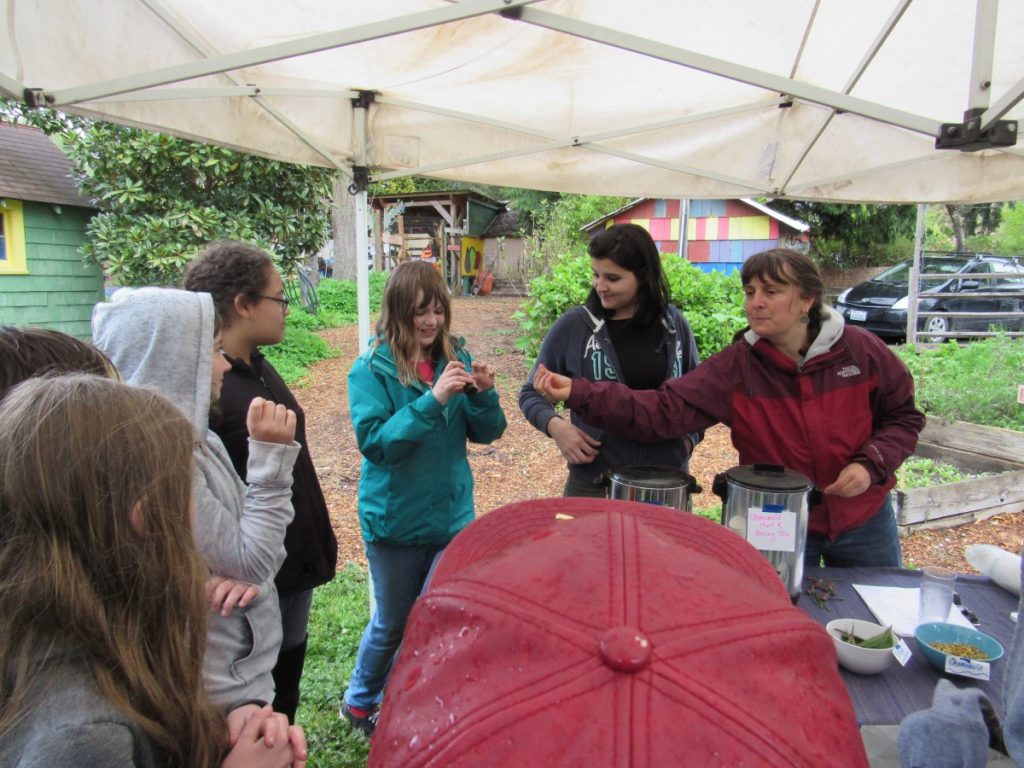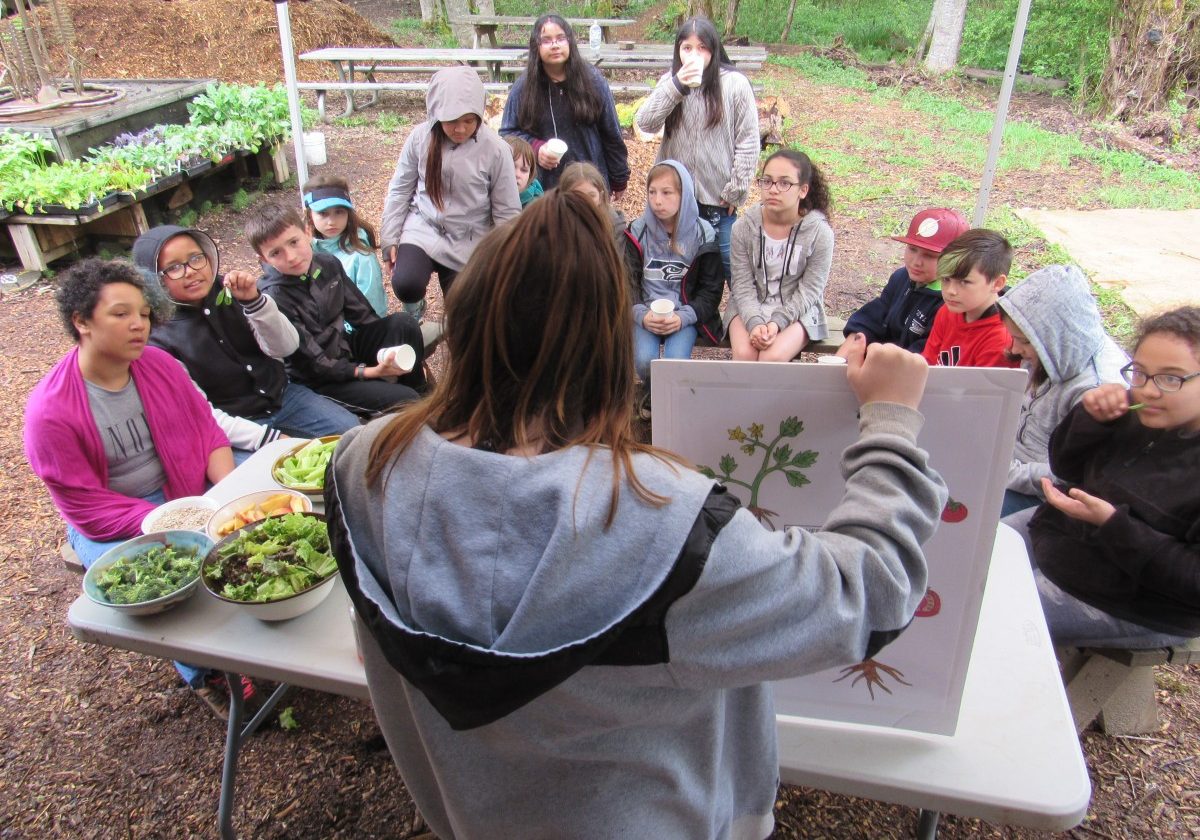The second two week cycle began just the same— same introduction to the program and their roles, same resistance to practicing— just a new group of high school youth. There were several differences though, as things developed. First, most of the group wanted to have different roles from the first and second field trip, to try different parts of it, rather than get really good at their specific role. We supported them in that, suiting it to meet the needs of the visiting tour groups. That was the second marked difference. This time around the two tour groups were much older and much larger. We had forty middle schoolers and seventy-two 5th graders. We had to adapt the curriculum to a more advanced audience, and had to collaborate on cycling three and five tour groups around respectively, as opposed to the two we did previously.

The middle school group were a unique challenge, as many of them had very present and outspoken “cool cards” where they found many of the activities uninteresting or gross. Some complained of child labor when we had them doing some farm work. There were many who were very engaged and interested and not afraid to show it. It was very encouraging to see them debating about the work amongst themselves, saying “ you signed a waiver to come here, so it’s not child labor.” There were many kids unafraid of getting dirty, happy to move wheelbarrows and shovel and rake mulch, elated to play games and present ideas in workshops. And yet, the unengaged and unhappy youth got to me. I wanted them all to enjoy it, to see the value in and learn from the experience. One of our youth crew came out of this experience a hero to the visitors. They thought he was hilarious, and for many he was their favorite part of the whole trip. I think this was an awesome thing for this student, as they are often dismissed in the traditional educational setting and outside of GRuB.

As for the fifth grade classes, it was a mad house! They showed up in two groups, as they rode the city bus to GRuB, and left at two different times. We had to use some emergent design to adapt our plans to meet the time management challenges we faced. And getting 72 children to settle down and focus after running around and playing games for twenty minutes is not easy. When we split into our tour groups, led this time by Katherine and four interns, myself included, each group carried these difficulties with them. Personally, my group was quiet rowdy for most of the time. I had to stop them on several occasions to ask them to be respectful of our presenters, because they had been goofing off at one of them, in a way that made us end without finishing the full compost workshop. After these gentle reminders they were a bit better behaved. One student in particular was challenging everything the presenters and myself said, actively and intentionally disrupting the experience for others. Overall though, I think the group had a fantastic time, and it challenged each of us in new ways. It certainly showed our youth crew how difficult it can be to be an educator.
This rotation has shown me how much I have yet to learn— how to better engage the rowdy or uninterested students, to accept that I can’t make everyone have the best time ever, to keep my calm in the face of disrespectful behavior, and to learn to enjoy the unexpected and adapt to what the day presents as.

Be First to Comment